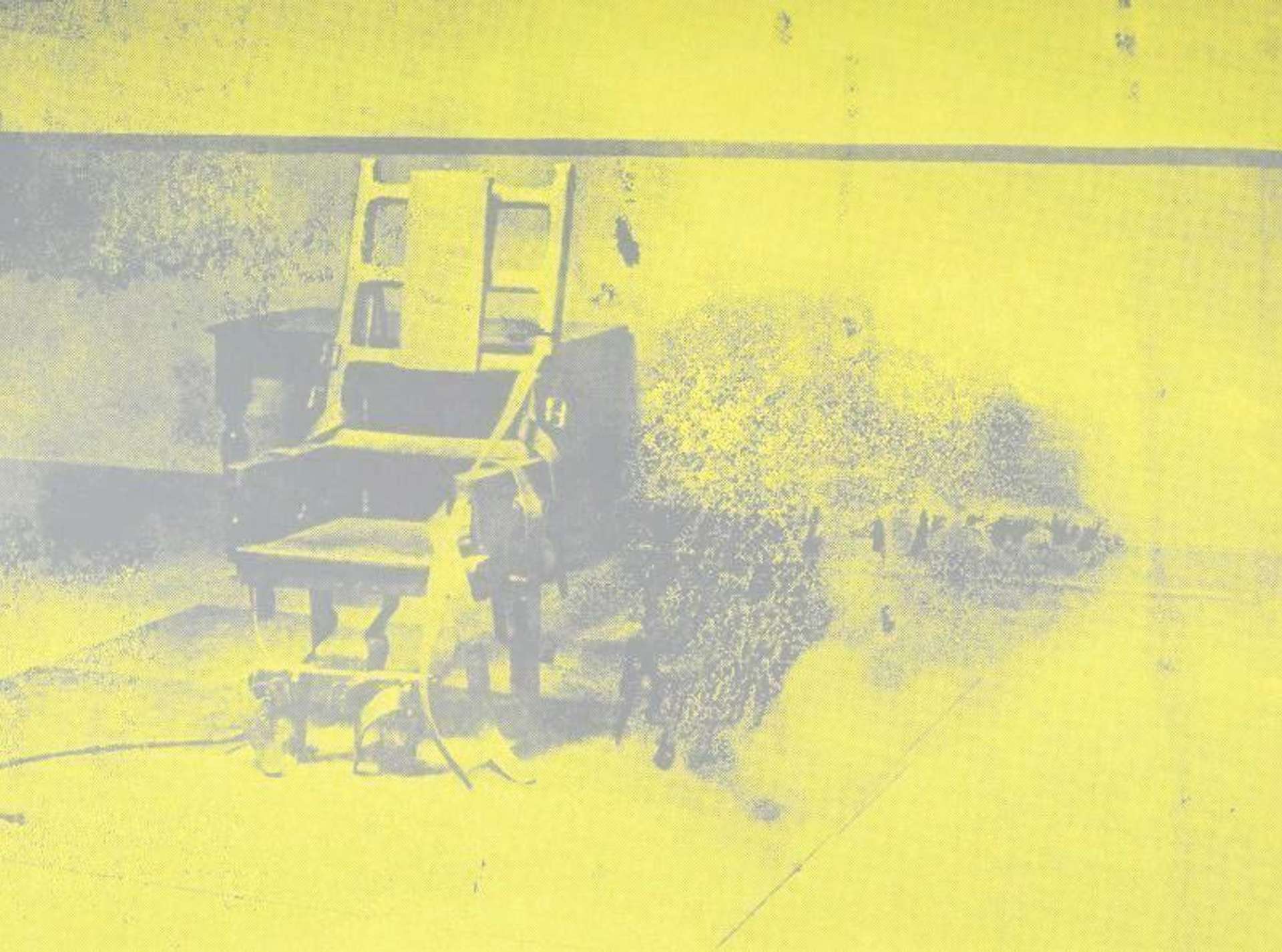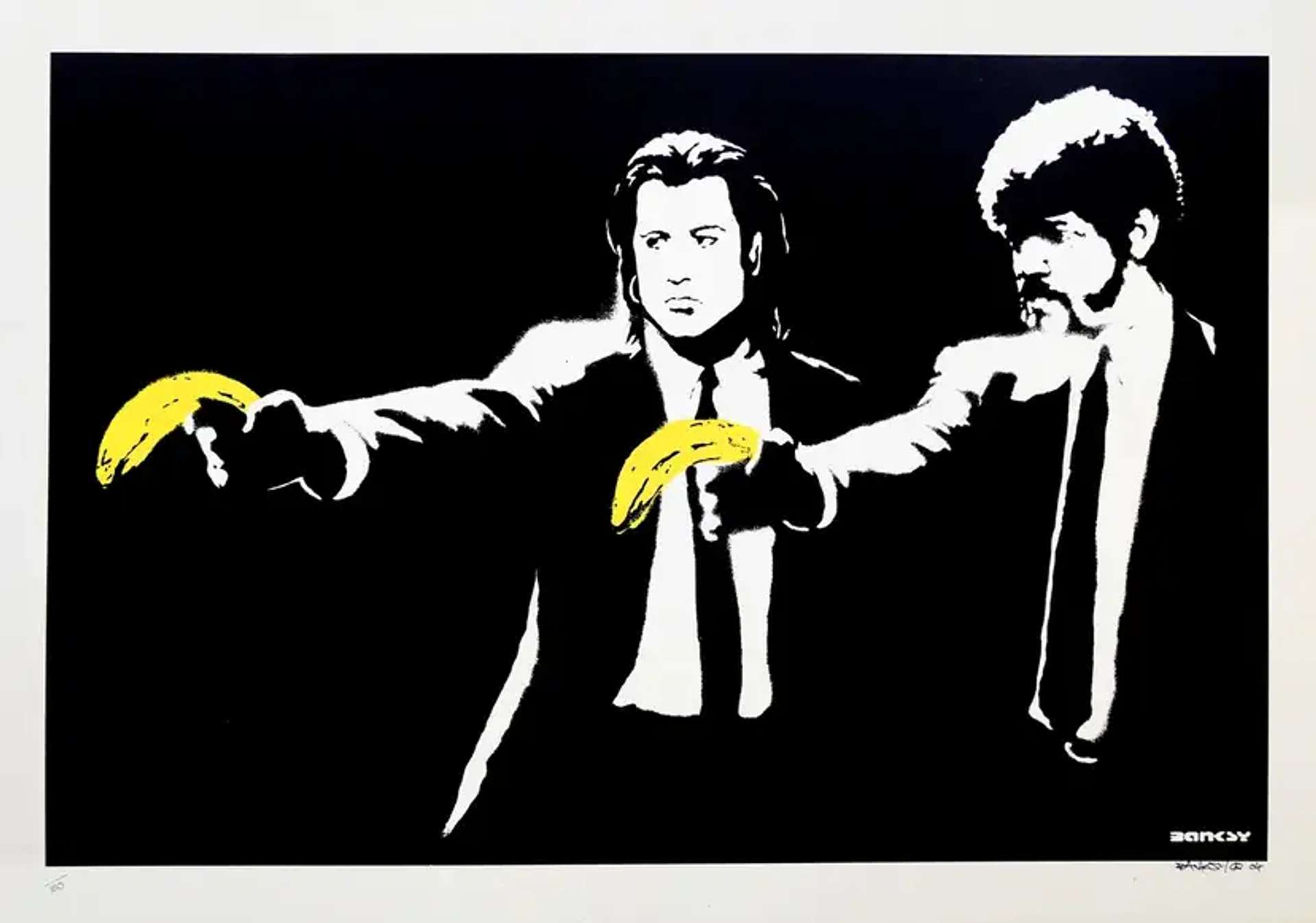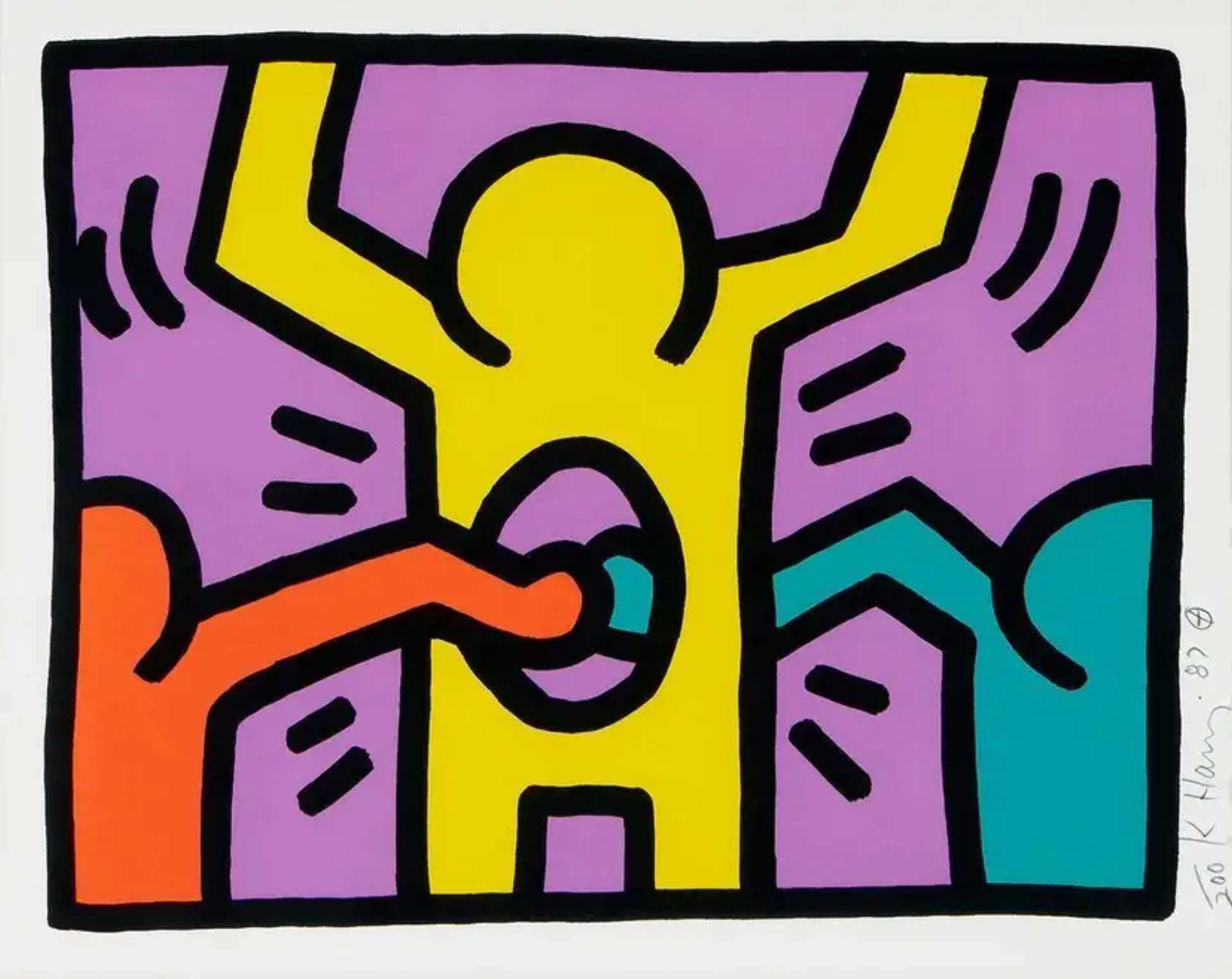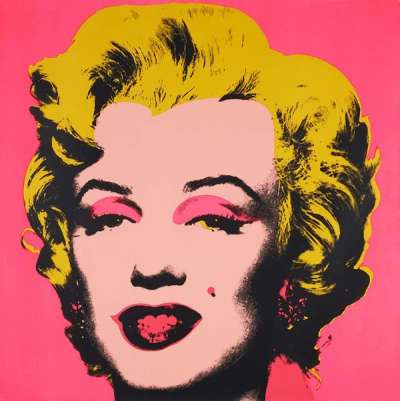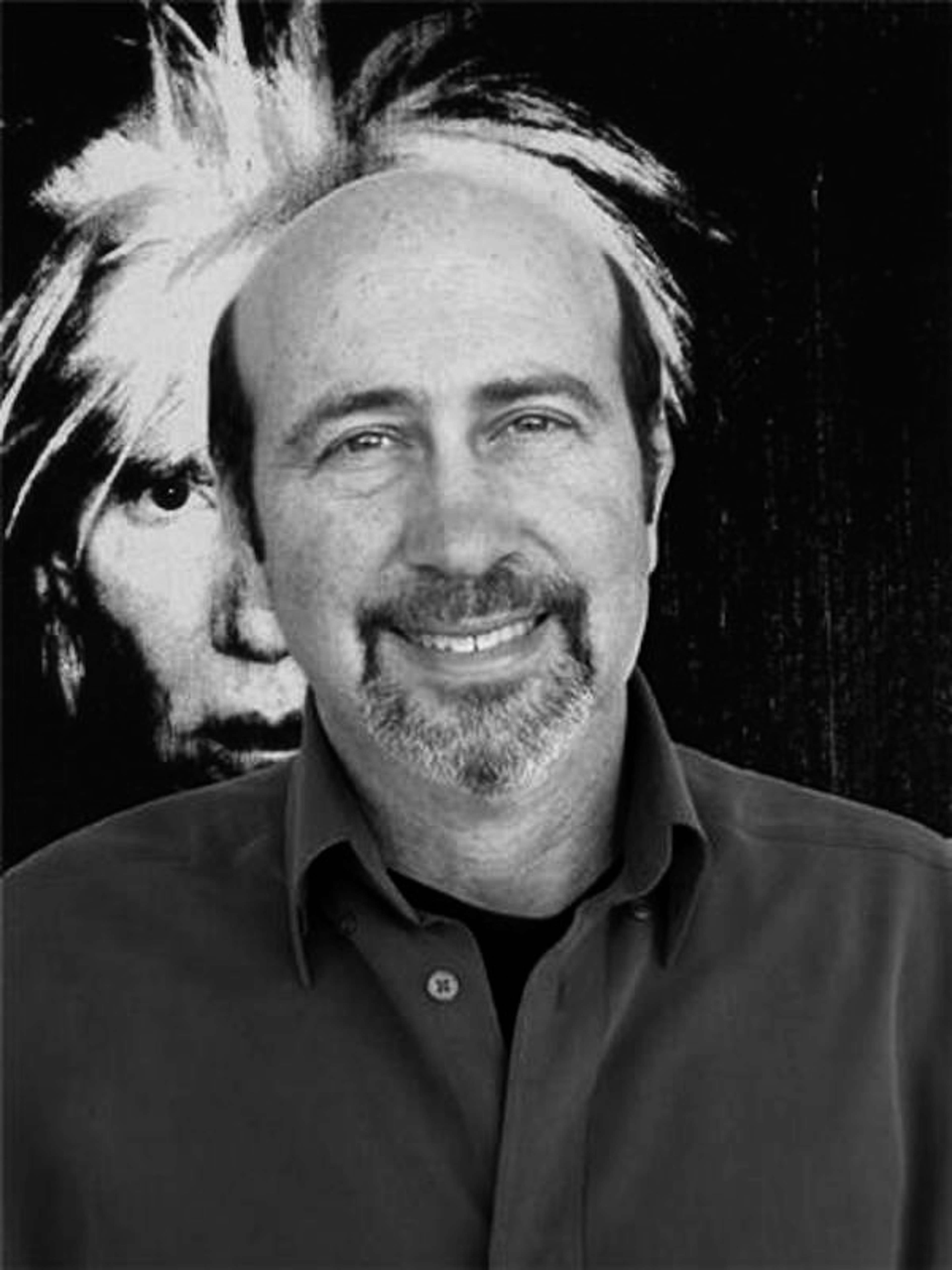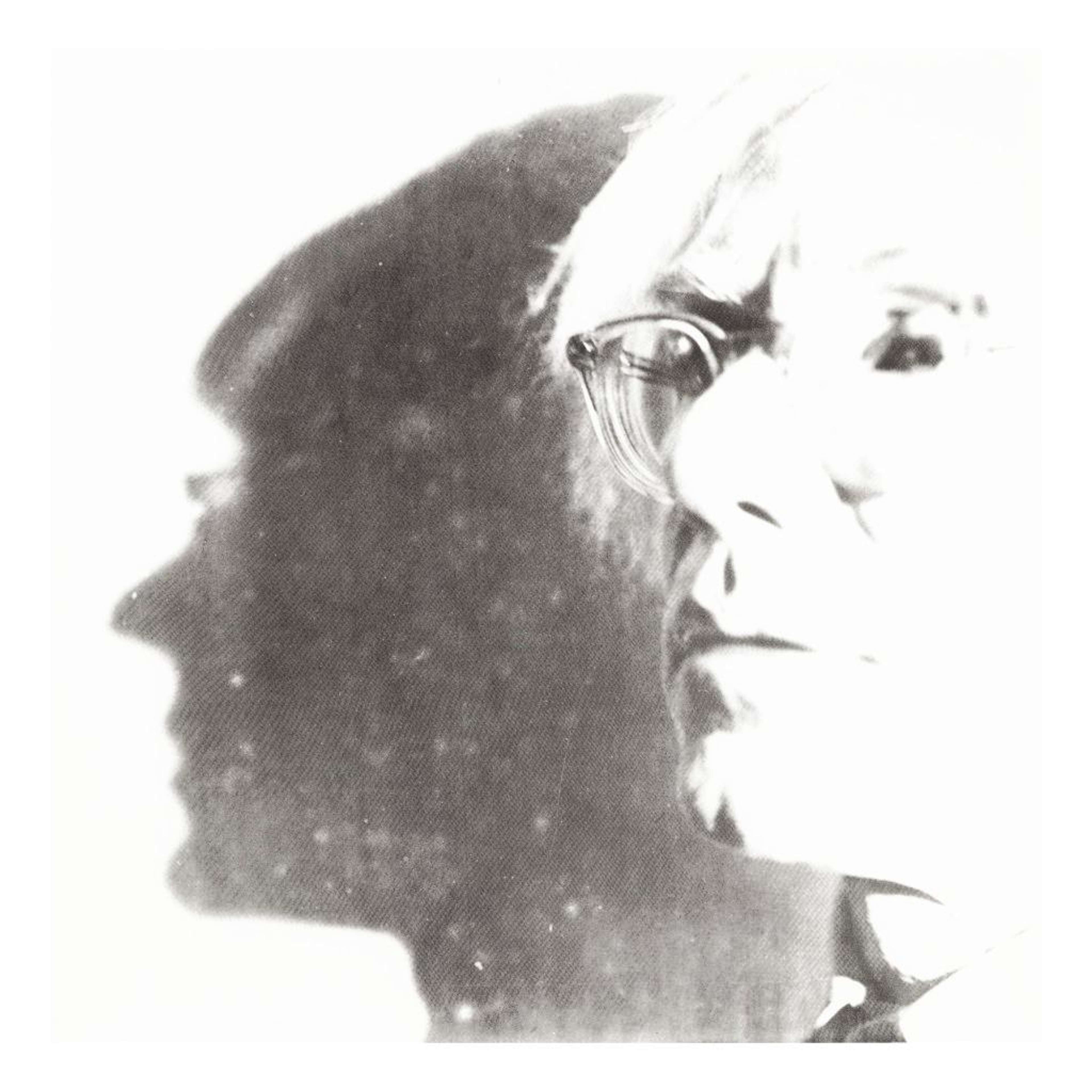 The Shadow (unique) © Andy Warhol, 1981
The Shadow (unique) © Andy Warhol, 1981MyPortfolio
If you are in the market for a Warhol print or you already have one, you may be wondering: "How do you authenticate Andy Warhol?" Leading Andy Warhol expert Richard Polsky speaks to MyArtBroker about how to assess a Warhol print like a professional authenticator.
Is Warhol the most forged artist on the market? According to the New York Post, billions of dollars of forged art are sold annually and the King of Pop Art’s machine-like printing technique – which has made his work so popular and iconic – has also, ironically, made him one of the easiest artists to imitate.
Which Andy Warhol artworks are most faked?
The most faked Warhol artworks are the Marilyn portraits, considered one of the artist’s most celebrated series. Original paintings can sell for millions at auction: the latest record price was set in May 2022 with the sale of Shot Sage Blue Marilyn for US$195 million (£158 million) at Christie’s in New York. The sale made headlines, but this was entirely dependent on its worthy authentication, including the painting's fascinating provenance.
 Image © Christie's / Shot Sage Blue Marilyn © Andy Warhol, 1964
Image © Christie's / Shot Sage Blue Marilyn © Andy Warhol, 1964Other commonly counterfeited Warhols include works in his Myths, Ads and Endangered Species portfolios.
But it is not just the better-known editions that are at risk: artworks from Warhol’s early career in advertising and illustration are also prone to fakes. Of these, the Shoes series is most targeted by forgers, followed by the Cats Named Sam series.
How can I tell if my Warhol print is real?
“Rule number one of the art authentication business is never assume anything,” says Richard Polsky, a leading expert on Warhol and founder of Richard Polsky Art Authentication.
For Polsky, authenticity is one of the most important things to consider when buying art because the stakes can be high – details like signature, characteristics, edition numbers, provenance and paper quality can all be clues on whether an artwork is authentic or fake.
Before you buy a new Warhol or sell your Warhol print, there are 8 questions to ask when authenticating Warhol artworks:
Does my Warhol have the right characteristics?
Despite their machine-like quality, Warhol’s prints were all handmade and this gave each work unique, subtle qualities: some had too much ink, while others had too little.
“Despite the repetitious format of Warhol’s paintings, no two were alike. Each painting had its own personality because of variances in the screening process,” Polsky explains.
If a Warhol print looks too similar to another, like it was duplicated on a laser printer, then it probably was.
In addition, many of Warhol’s early prints like Flowers and Campbell’s Soup Cans were made using low-quality, mass-produced paper and inks, which are now prone to fading. This is to be expected and Polsky advises sellers not to ‘refresh’ the print to improve its quality – it would no longer be fully Warhol’s and, therefore, “virtually worthless”.
In Polsky’s experience, if a Warhol looks ‘off’ and does not have the right characteristics, the authentication process stops there. “If the work doesn’t check out visually, then there’s no point researching its history,” the art expert states.
Does my Warhol have the right edition number?
If your Warhol artwork has a different edition number to the one listed in the definitive Andy Warhol Prints: A Catalogue Raisonné 1962–1987, it is almost certainly a fake.
But even when forgers get the edition number right, they might miss out on a tiny but significant detail, like “the hand-drawn ‘slash’ used to separate the individual number of the print from the edition size,” Polsky points out.
Does my Warhol have provenance?
Provenance is a record of the artwork’s history and “in a perfect world, a painting would come with complete documentation,” says Polsky. This could include an invoice from the original gallery, labels and stickers attached to the work, or an illustration of the artwork in an exhibition or auction catalogue.
But some artworks, even authentic ones, may be lacking in documentation – it could have originally been a gift from the artist, or the paperwork was lost years ago. In Polsky’s professional opinion, it is better to admit you don’t know than to lie.
“Problems tend to crop up when an owner starts guessing and offers such platitudes as, ‘My parents were major collectors — of course it’s real’,” he says. “Unless their purported Warhol comes with some paperwork, their statement is just talk.”
Read more: I Authenticated Andy Warhol: Art Authentication 101
Does my Warhol have the right signature?
Warhol’s signature changed over time, so it is essential to check that your artwork has the right Warhol signature for the right era.
In the 1950s, Warhol used a handwritten signature, either writing out ‘Andy Warhol’ in an almost unreadable scrawl or abbreviating it to ‘AW’. By the late 1960s, he introduced a rubber stamp signature alongside his handwritten one. From the 1970s to his death in 1987, Warhol’s signature was slightly more legible, with the A, Y and L the clearest.
It is also worth noting that the colour of Warhol’s signature, like the other colours in his prints, often fades with time. If the signature on your Warhol artwork looks too fresh, particularly in comparison to the rest of the print, it might indicate a fake.
Does my Warhol have the right paper?
The paper that Warhol used for his prints varied throughout his career, so having the wrong type of paper for the era could be a sign that your artwork is forged.
Warhol’s Campbell’s Soup Cans prints from the late 1960s, for example, were printed on inexpensive paper to match the mass-produced soup cans. If you see a Campbell’s Soup that looks very clean, new or high quality, you are right to be suspicious. If in doubt, check the information about the print in the Catalogue Raisonné.
Does my Andy Warhol price sound right?
If the price of a Warhol artwork seems too good to be true… it likely is. Many intelligent people convince themselves that they have found a bargain but, in Polsky’s experience, there is no such thing.
“The bait is always the same,” he says. A potential buyer thinks he has outwitted the seller by discovering an undervalued Warhol and will make a huge return on the resale. “Alas, these adventures always end badly.”
Who was the Andy Warhol Authentication Board?
The Andy Warhol Authentication Board was set up in 1995 by the Andy Warhol Foundation to authenticate the artist’s works and reduce the number of fakes on the secondary market.
Over 16 years, they were the leading authority on whether a Warhol was a fake or the real deal, reviewing 6,600 works and rejecting close to 20% of applicants.
But the Authentication Board’s assessments were not always accurate. Some works stamped as ‘Authentic’ have turned out to be fakes. Meanwhile, owners of Warhols stamped with ‘DENIED’ have gone to court over the decision. In their last five years, the Foundation spent close to US$8 million in legal fees, compared to US$2.5 million in operations.
While your Warhol print is more likely to be authentic if it has been assessed by the Andy Warhol Authentication Board, it is not essential to have their stamp. Even before the Board closed in 2012, major Warhol paintings were sold at auction without official approval – including Green Car Crash (Green Burning Car I), which achieved US$71.7 million, more than double its high estimate.
What is the Andy Warhol Catalogue Raisonné?
For Polsky, the Andy Warhol Catalogue Raisonné should be on the shelf of every serious Warhol collector: it is the ultimate guide to the Pop Artist’s work, listing every known painting, sculpture and print by Warhol between 1964-87 (with more works still being added) – if your artwork is not in it, it might not be authentic.
But even the Andy Warhol Catalogue Raisonné is an imperfect resource, says Polsky, and works have been known to fall through the cracks. “During the early days of the Factory, recordkeeping was haphazard,” he recalls, with pieces being “traded, given away, and taken without permission”.
Recalling his experience authenticating singer Alice Cooper’s Little Electric Chair, Polsky saw that the artwork was not in the Catalogue Raisonné but “knew for a fact there were more genuine ones out there” because he had authenticated similar works before. “They were sold by a disgruntled employee of Andy’s, who allegedly wasn’t paid (or was underpaid), and absconded with them,” he explained.
So if you don’t see your Warhol in the Catalogue Raisonné, don’t panic. It does not mean for certain that it is a fake.
You can find library copies of the Warhol's Catalogue Raisonné here.
Where can I go to authenticate a Warhol print?
If you are looking for advice, MyArtBroker can connect you with specialists to authenticate your Warhol print.



